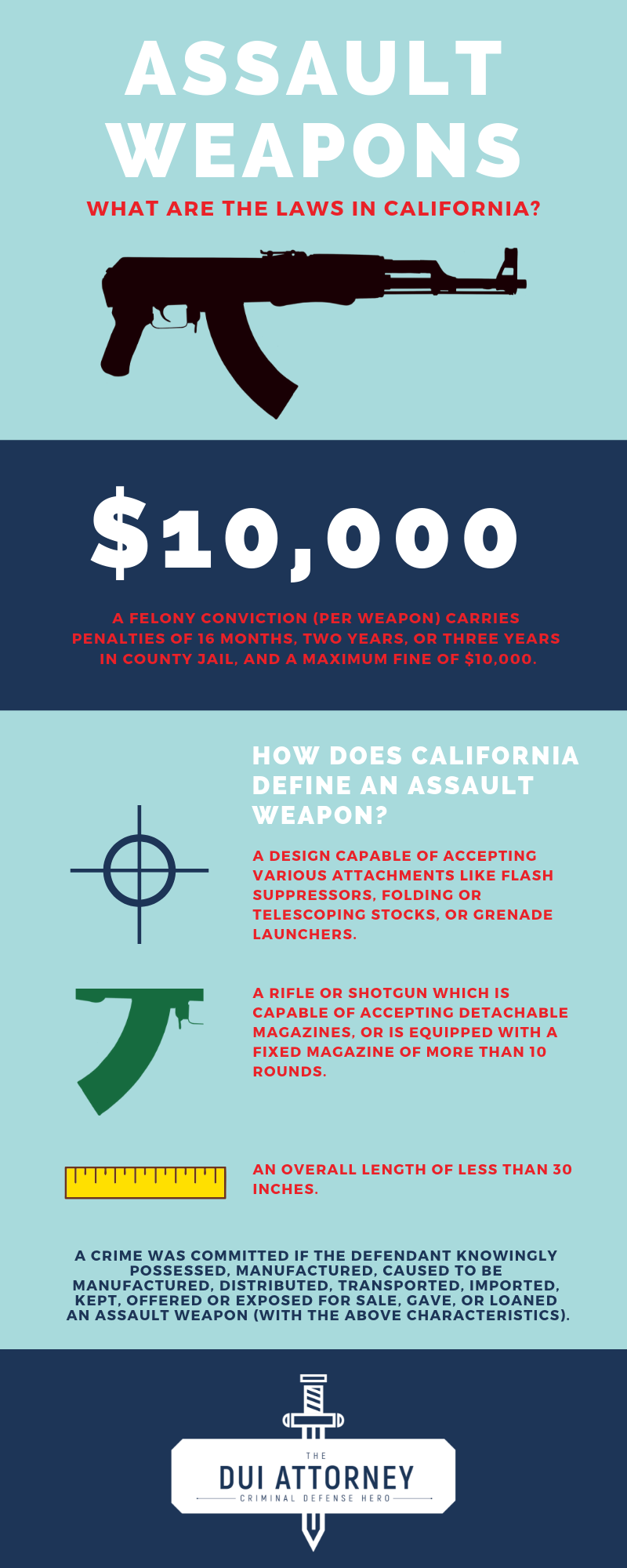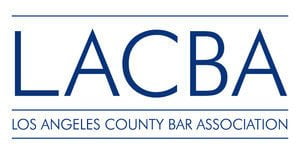Everyone knows that California has restrictive gun laws. But what some people don’t realize is that many firearms which are perfectly legal in most other states cannot be sold or possessed in California.
 assault weapons laws – long beach defense attorney
assault weapons laws – long beach defense attorney
Firearms which bear a resemblance to military weaponry have been painted with a broad brush by California lawmakers. As a result, these popular firearms are not available to law-abiding citizens who want to use them for legitimate sporting purposes, as enjoyed by residents of most other states.
Note: California’s assault weapons and firearms laws are complex and subject to ongoing change. For the most accurate and up-to-date information, consult with a qualified attorney.
When most people hear the phrase “assault weapon” the image that springs to mind are the rifles used by military forces, like the iconic M16, M4 carbine, and AK47. However, the state of California’s assault weapons laws even prohibit possession of firearms which merely look similar to military weaponry.
What is defined as an assault weapon under California law?
This rifle, considered a sporting arm in most states, commonly used by individuals of all ages and genders, and popular for recreational and competitive target shooting, is banned from sale and possession in California.
California’s complex assault weapons laws are spelled out in several penal code sections, namely 30500-30520 and 30600-30675, and generally prohibit ownership of firearms which have any one of a series of superficial characteristics which contribute to the appearance of a firearm, but not necessarily to its function.
Characteristics which constitute an assault weapon in California include, but are not limited to:
A design which is capable of accepting various attachments such as flash suppressors, folding or telescoping stocks, or grenade launchers.
This provision is of dubious merit for several reasons. First, a flash suppressor is actually a safety device which helps minimize the bright flash of light which is emitted from virtually all firearms when a round is fired. Interestingly enough, a closely related device with a similar appearance — called a muzzle brake — is permitted under California law. As for folding or telescoping stocks, their primary purpose is to fit the weapon to the shooter’s arm length, or to permit more convenient storage of the weapon. And the mention of a grenade launcher is facetious, as explosive launchers of any type are strictly regulated or prohibited under state and federal laws which long predate the laws discussed here.
A rifle or shotgun which is capable of accepting detachable magazines, or is equipped with a fixed magazine of more than 10 rounds.
Detachable ammunition feeding devices, called magazines and sometimes referred to colloquially as “clips” have long been a target for regulation at the local, state, and federal level in the name of reducing “gun violence.” California lawmakers have been especially aggressive in this respect.
An overall length of less than 30 inches.
Federal law requires that rifles have a minimum overall length of 26 inches – any rifle less than 26” in length must be registered with the Bureau of Alcohol, Tobacco, and Firearms and is subject to a $200 federal tax. But apparently, the 26” standard was not restrictive enough for California legislators’ liking, so they enacted the 30” minimum requirement.
In addition to classifying firearms with these characteristics as assault weapons, PC 30510 also designates a list of specific firearms which were sold in the state prior to 1989 as assault weapons.
It is important to note that California’s legal designation of “assault weapon” pursuant to the penal code sections discussed herein applies only to semi-automatic (one trigger pull fires one bullet) rifles, shotguns, and certain pistols. Military assault weapons are almost always fully automatic (one trigger pull fires multiple bullets). Fully automatic weapons have long been banned from civilian ownership in California, and do not fall under the scope of the penal codes discussed in this article.
Exceptions to California assault weapons laws
While there are a few circumstances in which possession of an assault weapon is permitted, these circumstances do not apply to the vast majority of private citizens:
You legally owned the assault weapon prior to enactment of applicable assault weapon regulations, and the weapon was registered with the California Department of Justice prior to December 31, 2000.
You have a permit issued by the state or a federal agency to manufacture and/or sell assault weapons to law enforcement or military organizations.
You are the executor or administrator of the estate of a deceased person who legally owned an assault weapon at the time of their death.
You are involved in target shooting events or firearm exhibitions which are sanctioned by a law enforcement agency.
This and other provisions permit most any individual who is a police officer or is associated with a law enforcement agency – such as prison guards, game wardens, and school police — to personally purchase and own assault weapons. However, some law enforcement agencies specifically prohibit their personnel from using such weapons for anything other than law enforcement purposes.
You have a valid permit which specifically authorizes you to possess an assault weapon.
Finally, residents of other states who are traveling within the boundaries of California for the purpose of participating in organized competition which utilizes assault weapons are permitted to possess such weapons.
Elements of a crime under California assault weapon laws
To be convicted of an offense, the prosecution must successfully prove each of the following three elements:
The defendant possessed, manufactured, caused to be manufactured, distributed, transported, imported, kept, offered or exposed for sale, gave, or loaned an assault weapon.
The defendant knew they committed one or more of the above actions.
At the time the defendant acted, they knew or reasonably should have known that the weapon had the characteristics of an assault weapon.
For example, if William dies while legally owning a rifle which qualifies as an assault weapon and his sister Mary is the executor of his estate, Mary could not be prosecuted for possession of the assault weapon upon her brother’s death. But if Mary transfers possession of the assault weapon to William’s son Roger, who is an avid gun collector, Roger’s possession of the assault weapon would be unlawful. And because Roger — as a firearms enthusiast — should have been aware that the gun had the characteristics of an assault weapon, he potentially could be convicted.
Defenses against a charge of assault weapons possession under California PC 30600-30675
Technical challenges to the designation as an assault weapon
A charge of assault weapons possession hinges upon the characteristics of the weapon in question. If the defense can show that the weapon is indeed not an assault weapon, the defendant should not be found guilty.
The defendant did not know the weapon was unlawful
A critical element of the crime is knowledge and familiarity with firearms and the laws which regulate them in California. If the accused had no such knowledge, and it was not reasonable to expect the accused to have such knowledge at the time of the offense, they should not be convicted of the crime. This defense is especially relevant in situations where an individual inherits an assault weapon from a family member, and has no idea that their ownership of the weapon is actually prohibited.
Penalties for violating California’s assault weapons laws
Violations under PC 30600-30675 are considered serious. For the most part, these offenses are charged as felonies. However, under certain narrowly defined circumstances, an offense may be charged as a misdemeanor. A felony conviction carries penalties of 16 months, or two years, or three years in county jail, and a maximum fine of $10,000. Each assault weapon in a person’s possession can result in a separate charge; in other words, being caught with two or three assault weapons can potentially double or triple the jail sentence. Additionally, conviction of any felony charge may prohibit the defendant from possessing any firearm ever again. Conviction of most firearm-related misdemeanors results in a 10-year firearms ban.










